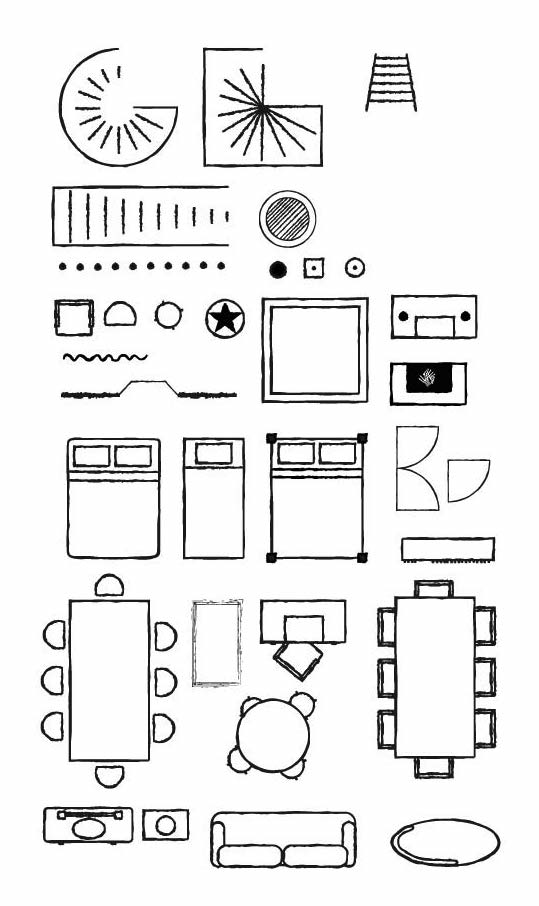
“Draw Maps and Leave Blanks” they said. Would anyone find it useful to have a set of very neural map symbols for DW, perhaps for use in Roll20. Ones that don’t encourage a complete map / mental image, but rather stay in the background and aid the Theatre of The Mind, and can be rapidly improvised with? If so I’ll keep going with these….
I’ve found that using Roll20 with the tokens and colourful monsters/decor/dungeons map has really slowed down my game, pushing us back to DnD even measuring distances because, hey it’s there. This has made my prep too involved. I was thinking of just using a single, thematic image, and just draw maps by hand. But then I thought maybe a symbol set that is more neutral and old school, would work – ones that can be legoed together on the fly, hence…

I never understood how people could use detailed maps and tokens without getting swamped with prep trying fit everything together or just ending up with inconsistent styles and jarring substitutes. This is also true for real maps and minis.
Every time: “This is me, except I don’t use axes, I’m a dwarf and I have hair.”
Unfortunately I don’t run any Roll20 games or use maps at the moment so my opinion doesn’t really count. But if I did use them, this is the kind of tokens I would look for. Just seeing them almost makes me want to run games using maps now.
Tor Droplets, Yes exactly, thanks wow. Will keep going.
Tor Droplets Well, it’s a game about imagination right? It’s fine if one picks up a miniature and say “look, my character is kinda like this dude here”
I agree that using maps in a more traditional sense (a grid) doesn’t make sense at all on Dungeon World (how would one know how many squares can be considered “far” or “close”?), but a cool thing to is do is just give a blank paper to the players and say “hey, you folks can draw the map here” and let them map the dungeon as they keep exploring it. It will greatly increase immersion IMO.
Also, prepping can be quite helpful at times, remember, you still need to draw maps and leave blank spaces, right? So yeah, making random encounter tables or drawing some simple, generic dungeons can be helpful, especially on a hexcrawl style of game (which is my favorite).
UPDATE: So I’ve kept going, and tested this out in the sample bellow, as you can see, everything (almost) fits on a grid, so one can quickly plop them into the right place. Also the doors and arches automatically hide the walls below them (except for secret doors – ovs!). Comment?
https://lh3.googleusercontent.com/bgus7eOln13GIee07TNAevUlkB0fVl5-OMHBPVO7iAHLR6P7k0g29EFZ2llxCb5AM_zyZCPF4XQDQFfasu-DY6p0ddt_QBKdEGU=s0
I run a DW game on Roll20. I’d be interested in these. I presently run “map light” only using maps when necessary and never getting bogged down in hexes/grids and exact distances for the most part. Sample of the kind of map I use…
https://lh3.googleusercontent.com/9Pwb4aEQSzxOfpA8I3FbQk8AaJyluG3GWr0UMchVleXUj8rpvtOfhZ8ho3FKPHfiVrjwg-1nkG_7fow=s0
Sherman S and you draw these before or during the game? And in roll20 or in something else? And with the mouse or a stylus?
Before. I rarely create maps in play. I do modify in play if necessary. I draw in Adobe Illustrator. Mouse or stylus. Shooting for the feel of the map shown on the original kickstarter pages. Simple, hand drawn style.